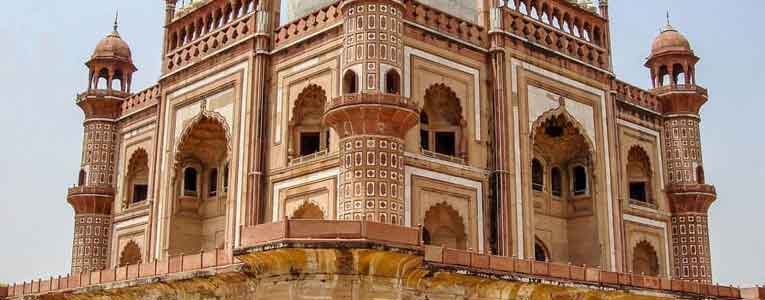


Safdarjung's Tomb is a sandstone and marble mausoleum in New Delhi, India. It was built in 1754 in the late Mughal Empire style for the statesman Safdarjung. The monument has an ambience of spaciousness and an imposing presence with its domed and arched red brown and white coloured structures. Safdarjung was made prime minister of the Mughal Empire (Wazir ul-Mamlak-i-Hindustan) when Ahmed Shah Bahadur ascended the throne in 1748.
The Safdarjung Tomb, designed by an Ethiopian architect marks the last colossal garden tomb of the Mughals. Although the Safdarjung Tomb was designed and constructed in line with the famous historical monument, Humayun’s Tomb, the tomb of Mughal Emperor Humayun in Delhi, it lacked in both grandeur and style compared to the latter. The mausoleum constructed on an elevated platform is surrounded by a huge square garden measuring 280 metres (920 ft) on each side with a courtyard and a three-domed mosque housed inside the compound that is enclosed within a wall.
One can avail cabs, auto rickshaws, local buses from different points of the city to reach the Garden Tomb; avail metro – nearest station Jor Bagh; avail conducted tours arranged by travel agencies and hotels that include sightseeing of the monument in their itinerary.
The entry fee charged here is 25 INR for Indians and 200 INR for foreigners. Also, there is no extra fee for taking pictures, but you would have to pay 25 INR for taking videos.
October to March is the best time to visit New Delhi. Summers are very hot here in Delhi and should be avoided as much as possible as the temperature might rise upto 45 degree Celsius. Temperatures fall a little during the monsoons, but rains might hamper your sightseeing plans.